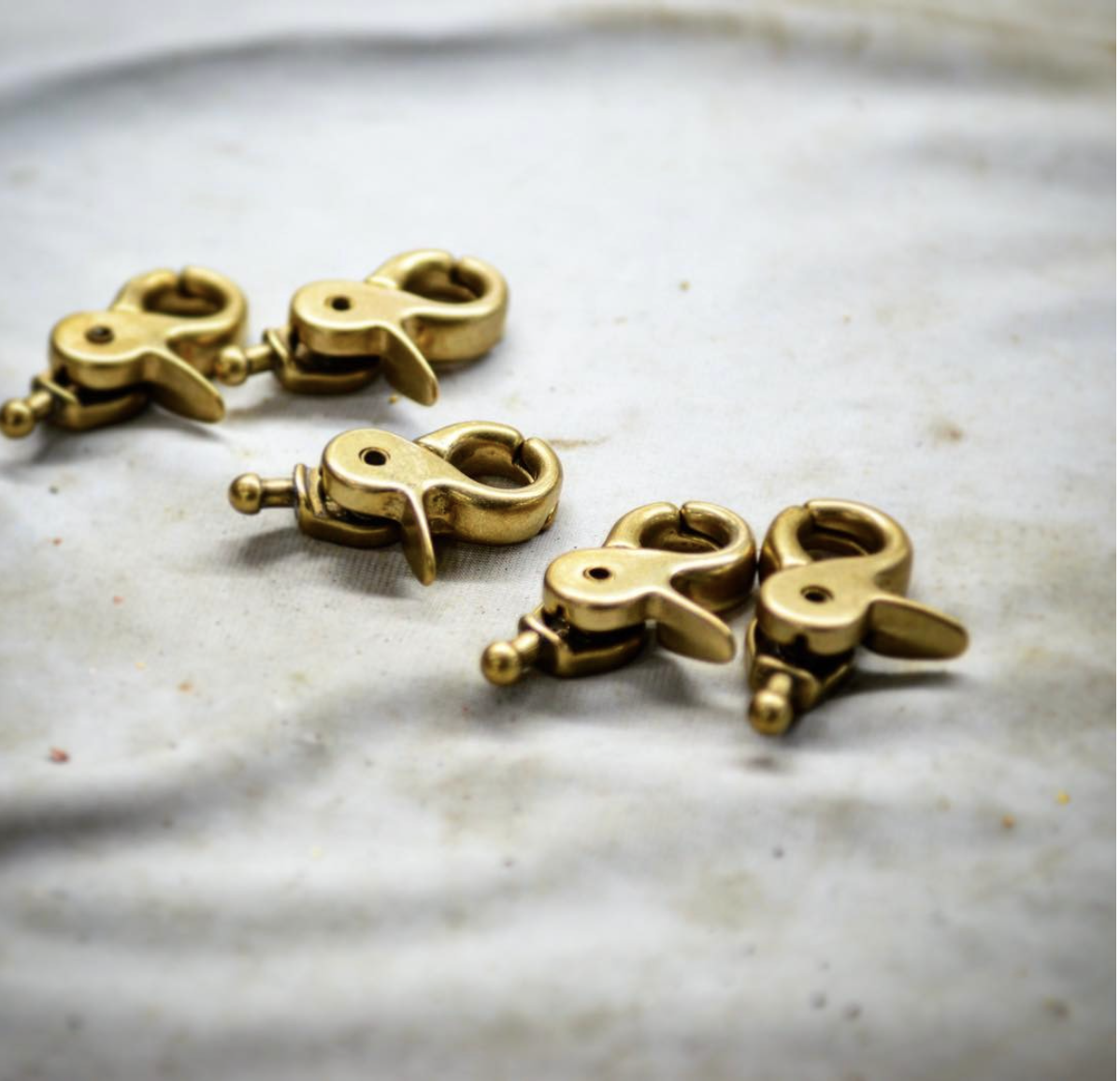Posted by Emily Hancock on 10 26 17
Everything You Need to Know About Brass Hardware
What is Brass Hardware? What is it made of?
Brass is a metallic alloy, made of copper and zinc. The amount of copper and zinc can vary, which creates different kinds of brass alloys.
Characteristics of Brass Hardware:
Malleability: Brass has a higher malleability than bronze or zinc. Brass has a lower melting point 1,650 to 1,720 °F, and is in general an easier material to cast.
Hard vs. Soft: Brass can be considered hard or soft. This is dependent on the proportions of copper and zinc.
Density:8.4 to 8.73 grams per cubic centimeter
Recyclable: Brass can be separated from ferrous scrap using a powerful magnet, making it ferromagnetic. The brass is collected, and is recast into billets. These billets can be modified in size, depending on how they are going to be used. 90% of brass alloys are recycled. However, at Buckleguy all of our low lead brass items are not from recycled metals, as to ensure proper low lead levels we must use new, non-recycled brass.
Color: Brass is known for it’s gold-like color.
Application: Brass is best used for locks, bearings, gears, doorknobs, musical instruments, zippers, buckles, and other similar hardware. It is a very durable material making it ideal when creating a long lasting product.
Brass Standards:
When discussing Brass Standards, lead is something that will come up quite frequently. Lead can be found in brass to ease the process of cutting the brass, adds pressure tightness, and has a very low melting point. Lead is added at a concentration of about 2%.
In 1999, thirteen manufacturers and distributors were sued by the California State Attorney General due to lead content. Lead and lead exposure has been linked to several health concerns. As a result, manufacturers and distributors agreed to only have lead content below 90ppm. There are a few terms to know when discussing lead and brass:
Low Lead Brass: No lead is intentionally added.
Lead Free Brass: This type of brass will contain bismuth as a substitute for lead. Bismuth also adds ease in the cutting of brass, as well as pressure tightness, and it’s low melting point. Bismuth is not known to be toxic to humans.
The Process of Brass Sand Casting:
Brass sand casting is a process that creates solid brass hardware. Brass sand casting is one of the most common, and has been utilized for centuries. There are six steps in total to this method. There are a few ingredients that are needed while sand casting. Sand, being one of the most important ingredients, is used as the mold material. Clay and water are both added to the sand mold during this process. The clay helps to bond the mold, while water is added to strengthen the clay.
The first step of sand casting is to have a rubber mold that fits the specific measurements of your brass hardware. Next, put the mold and sand into a “gating system”. Once that is complete, take the rubber out of the sand cast, and then add molten brass or zinc. After the brass has cooled and set, the sand and casting can be removed.

 Home
Home